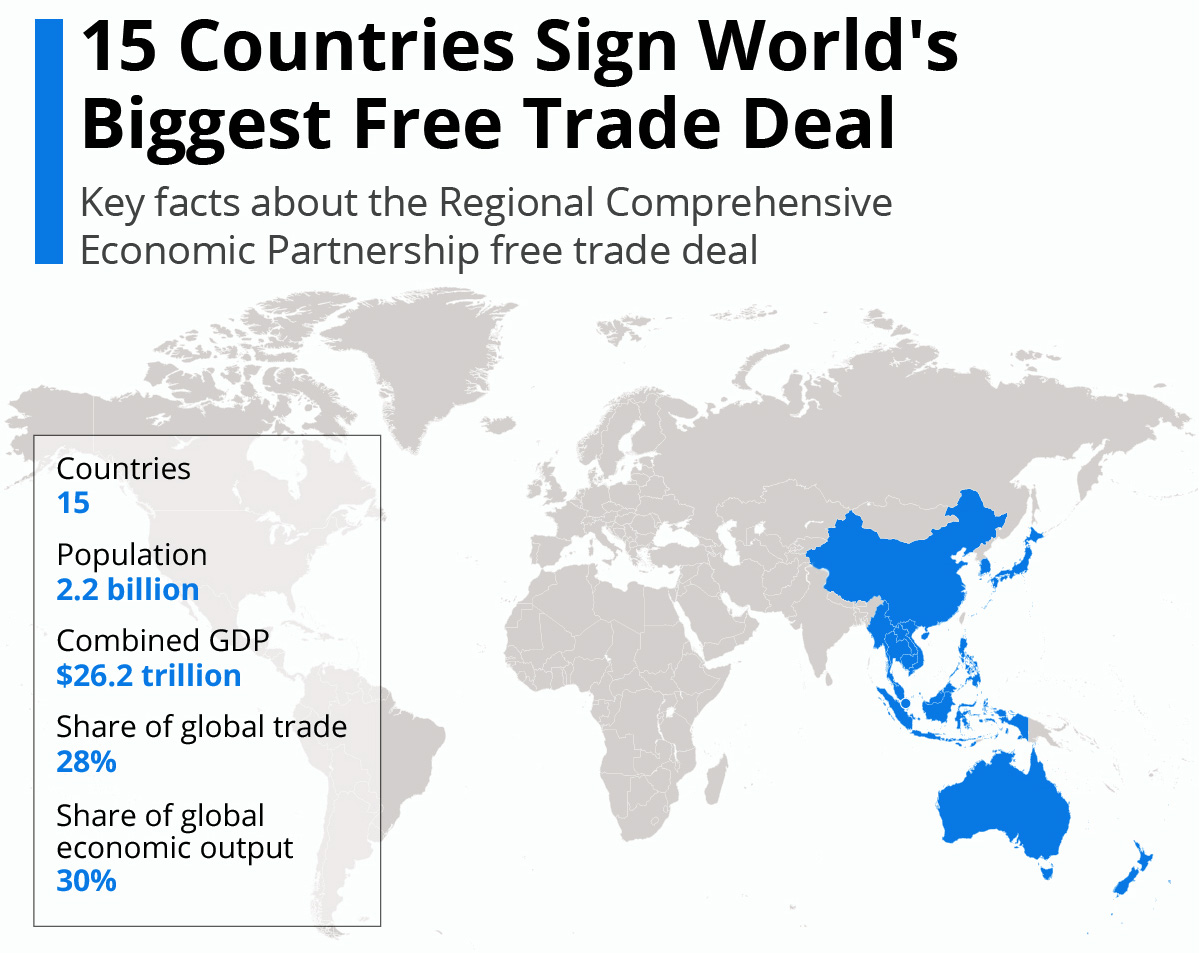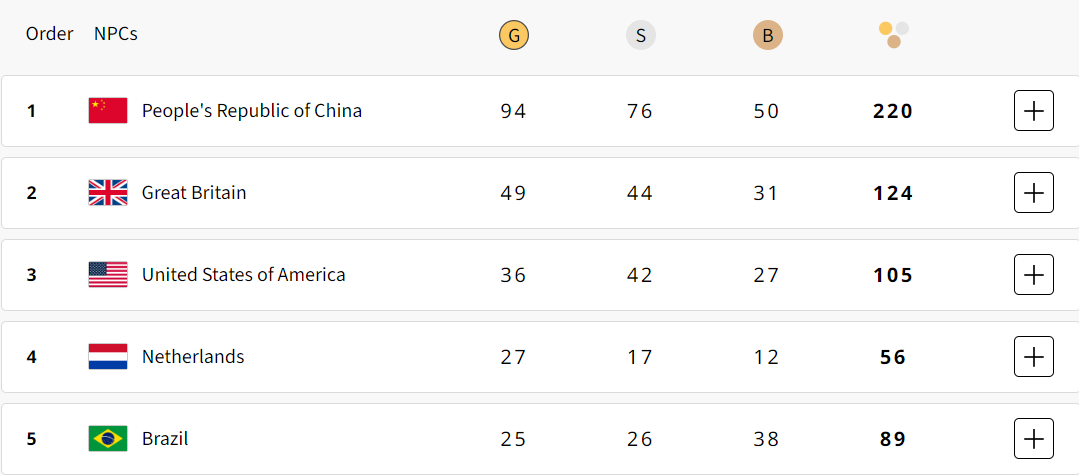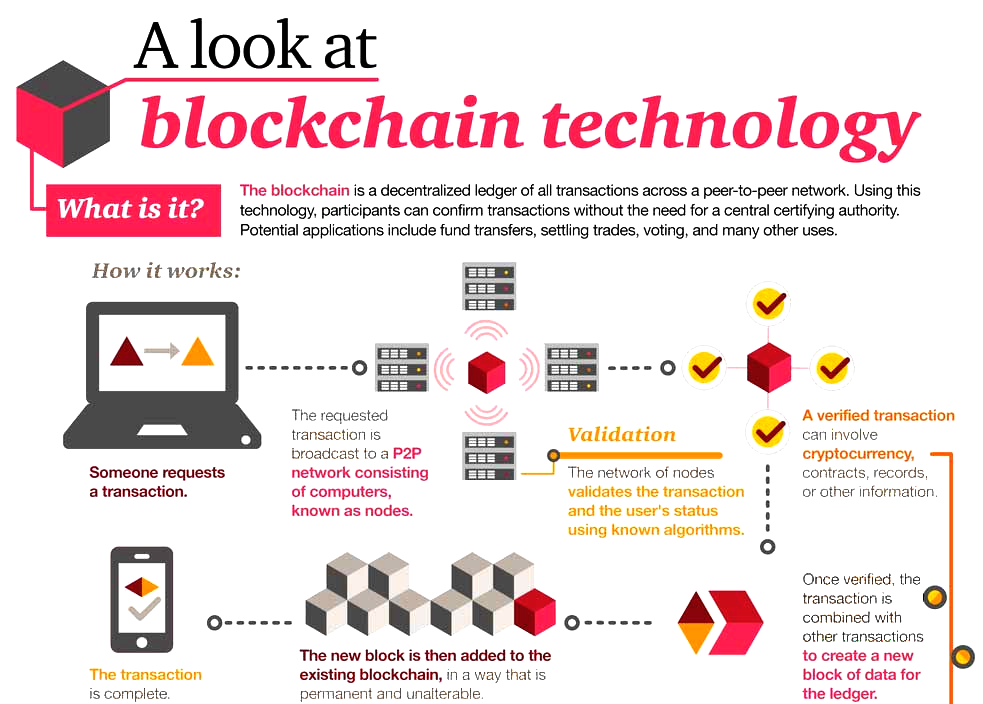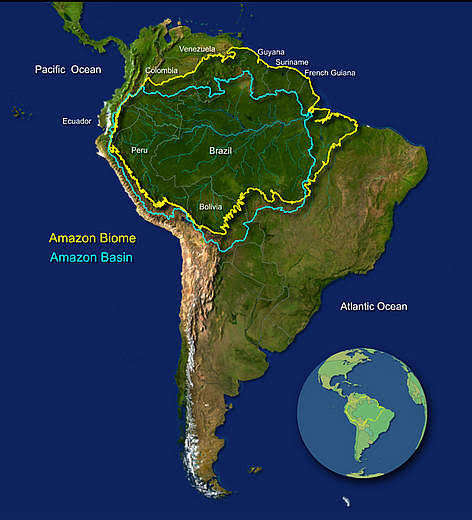Infographics
International Relations
India-UAE Relations
For Prelims: Nuclear Power Corporation of India Limited (NPCIL), Barakah Nuclear Power Plant, Liquefied Natural Gas (LNG), India Strategic Petroleum Reserve Limited (ISPRL), I2U2 Grouping, Comprehensive Economic Partnership Agreement (CEPA), Exercise Desert Cyclone, India-Middle East-Europe Economic Corridor (IMEC), Abraham Accords, Gulf Countries.
For Mains: Significance of UAE for India, Challenges Involved in India-UAE Relations.
Why in News?
Recently, India and the United Arab Emirates (UAE) held bilateral talks with the aim to deepen ties and enhance their Comprehensive Strategic Partnership.
- The crown prince of Abu Dhabi was hosted by India’s Prime Minister at Hyderabad House in New Delhi. Both countries inked several pacts to expand energy ties.
What are the Key Agreements Signed During the Visit?
- Civil Nuclear Cooperation: India and UAE signed a Memorandum of Understanding (MoU) for civil nuclear cooperation.
- The deal involves the Nuclear Power Corporation of India Limited (NPCIL) and the Emirates Nuclear Energy Company (ENEC) for operation and maintenance of Barakah Nuclear Power Plant.
- The Barakah Nuclear Energy Plant is situated in Al Dhafra, within the Emirate of Abu Dhabi in UAE. It is the Arab world's first nuclear power plant.
- Energy:
- LNG Supply: An MoU was signed for long-term Liquefied Natural Gas (LNG) supply between UAE and India.
- Strategic Petroleum Reserve (SPR): An MoU was signed with India Strategic Petroleum Reserve Limited (ISPRL) for supply of petroleum.
- SPRs are stockpiles of crude oil maintained by countries ensuring a stable supply of crude oil even during times of geopolitical uncertainty or supply disruptions.
- Food Parks: A MoU was signed with the Government of Gujarat on food parks development in India.
- India and the UAE are part of the I2U2 grouping under which food parks in Gujarat and Madhya Pradesh were envisaged.
Why is the UAE Important for India?
- Strategic Political Partnership: The elevation of India-UAE relations to a ‘comprehensive strategic partnership’ and the establishment of a ‘strategic security dialogue’ reflect the growing political and strategic alignment between the two countries.
- Bilateral Trade: The UAE is India’s third-largest trading partner.
- The Comprehensive Economic Partnership Agreement (CEPA) signed in 2022 has further boosted trade, with bilateral trade having increased from USD 72.9 billion (April 2021-Mar 2022) to USD 84.5 billion (April 2022-Mar 2023) registering a year-on-year increase of 16%.
- Foreign Direct Investment (FDI): UAE emerges as fourth largest investor in India during FY23.
- In FY23, FDI from the UAE to India surged over three-fold to USD 3.35 billion from USD 1.03 billion in 2021-22.
- Energy Security: The UAE is a key oil supplier for India and plays a critical role in India’s Strategic Petroleum Reserve (SPR) which is vital for India's energy security.
- Finance: The introduction of India's RuPay card and Unified Payments Interface (UPI) in the UAE highlights the growing financial collaboration.
- Both countries agreed for a Local Currency Settlement (LCS) System to promote the use of Indian Rupee and AED (United Arab Emirates Dirham) for cross-border transactions.
- Space Exploration: ISRO and UAE Space Agency (UAESA) signed an MoU regarding cooperation in the exploration and use of outer space for peaceful purposes .
- Defence and Security Cooperation: The UAE and India have strengthened their defence and security cooperation, focusing on counter-terrorism, intelligence sharing, and joint military exercises. E.g., Exercise Desert Cyclone.
- Additionally, the UAE's interest in Indian defence products such as BrahMos missiles, Akash air defence systems, and the Tejas fighter jet gained momentum during this period.
- Multilateral Engagements: The formation of the I2U2 grouping (India-Israel-UAE-US) and the UAE’s participation in the India-Middle East-Europe Economic Corridor (IMEC) reflect the strategic and economic significance of the UAE in regional and global multilateral engagements.
- Regional Stability: The UAE’s role in the Abraham Accords and the subsequent normalisation of diplomatic relations with Israel underline the UAE’s importance in fostering regional harmony and stability.
- Stability in the Middle East is crucial for India as India is heavily dependent on Gulf nations for its energy needs (oil and gas imports).
- Cultural and Diaspora Links: The large Indian diaspora in the UAE, comprising about 3.5 million people, forms a crucial link between the two nations.
- Initiatives like the inauguration of the first Hindu temple in Abu Dhabi reflect the shared values of tolerance and coexistence, enhancing cultural ties between India and the UAE.
- Cooperation During Covid-19: During the Covid-19 pandemic, both countries provided each other with medical supplies, equipment, and vaccines.
- This collaboration in the healthcare sector has strengthened their partnership and demonstrated their commitment to supporting each other in times of crisis.
What are the Challenges in India-UAE Relations?
- Limited Diversification of Trade Categories: Despite CEPA boosting overall trade, there is insufficient progress in expanding into new categories.
- The trade remains concentrated in a few sectors, such as gems and jewellery, petroleum, and smartphones, which hampers broader economic benefits and reduces trade diversification.
- Rising Import Costs: Imports from the UAE have increased significantly, growing by 19% year-on-year to USD 53,231 million in FY23.
- This rise in imports, coupled with the high dependency on certain categories, affects the trade balance and puts pressure on India’s trade surplus.
- Non-Tariff Barriers: Indian exports face hurdles like mandated Halal certification, which affects the export volume of processed foods. These non-tariff barriers can limit India's market access and competitiveness in the UAE.
- Human Rights Concerns: Issues related to the Kafala system, particularly concerning the rights of migrant labourers, are a significant concern.
- The kafala (sponsorship system) gives citizens and companies in Gulf countries almost total control over migrant workers' employment and immigration status.
- Diplomatic Balancing Act: The need to navigate regional conflicts, such as the Israel-Hamas war and tensions between Iran and Arab nations, poses additional challenges to India.
- Financial Support to Pakistan: The UAE's financial assistance to Pakistan raises concerns about potential misuse for anti-India activities.
- This support can create friction between India and the UAE, complicating diplomatic efforts.
Way Forward
- Promote Trade Diversification: Focus on emerging sectors such as technology, renewable energy, and pharmaceuticals to achieve a more balanced trade relationship and harness broader economic benefits.
- Strengthen Economic Ties: Explore opportunities for joint ventures and partnerships that can enhance economic collaboration and mitigate the impact of high import costs.
- Enhance Dialogue on Human Rights: Initiate discussions with UAE authorities to address concerns related to the Kafala system. Advocate for reforms that improve the rights and working conditions of migrant labourers, aligning with international labour standards.
- Focus on Areas of Common Interests: Engage in proactive diplomacy to align on common interests and ensure that geopolitical tensions do not adversely impact bilateral relations.
|
Drishti Mains Question: Analyse the significance of the United Arab Emirates (UAE) in India's foreign policy strategy. |
UPSC Civil Services Examination Previous Year Questions (PYQs)
Prelims:
Q.Which of the following is not a member of ‘Gulf Cooperation Council’? (2016)
(a) Iran
(b) Saudi Arabia
(c) Oman
(d) Kuwait
Ans: (a)
Q.Consider the following statements: (2008)
- Ajman is one of the seven Emirates of the UAE.
- Ras al-Khaimah was the last Sheikhdom to join the UAE.
Which of the statements given above is/are correct?
(a) 1 only
(b) 2 only
(c) Both 1 and 2
(d) Neither 1 nor 2
Ans: (c)
Mains
Q. The question of India’s Energy Security constitutes the most important part of India’s economic progress. Analyse India’s energy policy cooperation with West Asian countries. (2017)
Q. Project ‘Mausam’ is considered a unique foreign policy initiative of the Indian government to improve relationships with its neighbours. Does the project have a strategic dimension? Discuss (2015)
Geography
Uncommon Cyclones in the Arabian Sea
For Prelims: Arabian Sea, Asna, Cyclone, El Niño, Southern Ocean
For Mains: Important Geophysical phenomena, Climate Change and its impact on Cyclone Dynamics
Why in News?
Recently, the Arabian Sea witnessed a rare August cyclone, named Asna, which stirred considerable interest due to its unusual timing and origin.
- The north Indian Ocean, which includes the Arabian Sea and the Bay of Bengal, is typically less active in terms of cyclones compared to global oceanic regions. However, Asna's emergence has brought attention to the growing influence of climate change on cyclogenesis in this region.
Note
Cyclogenesis refers to the development or strengthening of cyclonic circulation in the atmosphere, often leading to the formation of cyclones and associated weather phenomena.
What are the Factors Contributing to Cyclogenesis in the North Indian Ocean?
- Oceanic Tunnels: The Indian Ocean has unique oceanic tunnels connecting it to the Pacific and Southern Oceans.
- The Pacific Tunnel (Indonesian Throughflow) introduces warm water to the upper 500 meters of the Indian Ocean, contributing to higher sea surface temperatures (SSTs) in the Arabian Sea, potentially enhancing convection and moisture availability.
- Warm SSTs can provide energy for cyclone development, but the impact may be moderated by other factors.
- The Southern Ocean Tunnel brings cooler waters below 1 kilometer depth, which can stabilise the lower ocean layers and limit vertical mixing of warmer surface waters.
- The cooler waters may also reduce SSTs and limit the energy available for cyclone formation, potentially suppressing cyclonic activity.
- The Pacific Tunnel (Indonesian Throughflow) introduces warm water to the upper 500 meters of the Indian Ocean, contributing to higher sea surface temperatures (SSTs) in the Arabian Sea, potentially enhancing convection and moisture availability.
- Pre and Post-Monsoon Cyclones: The north Indian Ocean, encompassing the Arabian Sea and the Bay of Bengal, experiences two distinct cyclone seasons, pre-monsoon (April to June) and post-monsoon (October to December) unlike other regions that typically have one.
- The region's unique climatic and oceanographic conditions, including the monsoonal circulation and dramatic seasonal wind reversals, contribute to these dual cyclone seasons.
- During the pre-monsoon season, cyclogenesis can occur in both the Arabian Sea and the Bay of Bengal due to warming and increased convection.
- In the post-monsoon season (October-December), the northeast monsoon and dry continental air ends up cooling the Arabian Sea, reducing the likelihood of cyclone formation, while the Bay of Bengal remains more favourable for cyclones.
- However, the Climate change is altering the patterns and intensity of cyclones in the Indian Ocean.
Note
The Arabian Sea has fewer cyclones than the Bay of Bengal due to stronger vertical wind shear and less convective activity.
- Despite rapid warming before the monsoon, cooling during the monsoon and persistent cooler temperatures reduce cyclonic development.
- Recent warming trends affect both regions, but the Arabian Sea remains less active.
How does Climate Change Impact the Indian Ocean?
- Rapid Warming: Climate change is causing the Indian Ocean to warm rapidly. Increased heat from the Pacific Ocean and warmer waters pushed in from the Southern Ocean contribute to this trend.
- Changes in atmospheric winds and humidity, driven by global climate shifts, further intensify the warming of the Indian Ocean.
- Global Influence: The Ocean's rapid warming is affecting the heat uptake by the Pacific Ocean and the sinking of heavy waters in the north Atlantic Ocean.
- The Indian Ocean is acting like a clearinghouse (modulates global climate variability and contributes to the overall heat balance) for ocean warming during climate change.
- Cyclogenesis Impact: The rapid warming and associated climate changes impact cyclone formation, frequency, and behavior, highlighting the region's unique response to global warming.
Cyclone Asna
- Cyclone Asna, a rare August cyclone, has drawn significant attention as the first North Indian Ocean cyclone in August since 1981.
- The name Asna, which means “the one to be acknowledged or praised”, has been given by Pakistan.
- Cyclone Asna originated from a powerful land-based low-pressure system, which is typical as most such systems form over the Bay of Bengal and bring heavy monsoon rains to India.
- The system transitioned into a cyclone upon moving into the warm Arabian Sea, which was fueled by global warming and regional weather patterns, provided the necessary energy for Asna to intensify, but it eventually dissipated due to dry desert air entering the cyclone's circulation.
- Climate change is making cyclones in the Indian Ocean more unpredictable, with factors like global warming, El Niño, and underwater volcanic eruptions contributing to extreme weather events in India, where the monsoon season has become increasingly erratic with unpredictable rainfall patterns.
|
Drishti Mains Question: Q. Explain the factors contributing to cyclogenesis in the North Indian Ocean and the impact of climate change. |
UPSC Civil Services Examination Previous Year Question (PYQ)
Prelims
Q. Consider the following statements: (2020)
- Jet streams occur in the Northern Hemisphere only.
- Only some cyclones develop an eye.
- The temperature inside the eye of a cyclone is nearly 10ºC lesser than that of the surroundings.
Which of the statements given above is/are correct?
(a) 1 only
(b) 2 and 3 only
(c) 2 only
(d) 1 and 3 only
Ans: (c)
Q. In the South Atlantic and South-Eastern Pacific regions in tropical latitudes, cyclone does not originate. What is the reason? (2015)
(a) Sea surface temperatures are low
(b) Inter-Tropical Convergence Zone seldom occurs
(c) Coriolis force is too weak
(d) Absence of land in those regions
Ans: (b)
Mains:
Q. Tropical cyclones are largely confined to the South China Sea, Bay of Bengal and Gulf of Mexico. Why? (2014)
Indian Economy
India’s Hesitancy in Joining RCEP
For Prelims: World Bank, Regional Comprehensive Economic Partnership (RCEP), Global Value Chains (GVCs), National Logistics Policy 2022, FDI, Free Trade Agreements (FTAs), National Electronics Policy 2019, Production Linked Incentives (PLI) scheme 2020, ASEAN.
For Mains: Regional Grouping and Its Impact on India, India’s Concerns with RCEP
Why in News?
Recently, the World Bank's latest India Development Update: India's Trade Opportunities in a Changing Global Context suggested India to re-consider joining Regional Comprehensive Economic Partnership (RCEP).
- An Indian think tanks rejected the idea saying it is based on flawed assumptions and outdated projections.
What is the World Bank's Analysis of India Opting out of the RCEP?
- Income Gains: According to a World Bank study, India’s income will increase by USD 60 billion annually if it rejoins the agreement and will fall by USD 6 billion if it does not.
- These gains would span various sectors, including raw materials, light and advanced manufacturing, and services.
- Export Growth: Expected export gains from joining RCEP could include 17% in services like computing, finance, and marketing.
- Denial of Economic Gains: RCEP (without India) will add USD 186 billion to the world economy and increase the GDP of its members by 0.2% on a permanent basis.
- The major beneficiaries would be China (USD 85 billion), Japan (USD 48 billion), and South Korea (USD 23 billion).
- India will miss a major portion of economic gain which may accrue from RCEP.
- Trade Diversion Risks: By staying out of RCEP, India could face trade diversion, as the trade bloc members could shift supply chains and increase competition among themselves, potentially harming India's exports to RCEP countries.
- Potential New Members: South Asian countries such as Bangladesh and Sri Lanka, have recently indicated interest in joining RCEP.
- In effect, India cannot fully remain out of the influence of RCEP as India has an FTA with countries like Sri Lanka.
What is the World Bank's Evaluation of India's Export Strategy and Trade Policy?
- Need for Export Diversification: Over the years, India’s trade in goods as a percentage of GDP has declined, and its participation in Global Value Chains (GVCs) has decreased.
- Diversification can be achieved by expanding into more labour-intensive sectors such as textiles, apparel, leather and footwear.
- India's share in global exports of Apparel, Leather, Textiles, and Footwear (ALTF) initially grew from 0.9% in 2002 to a peak of 4.5% in 2013, but it subsequently declined to 3.5% in 2022.
- Diversification can be achieved by expanding into more labour-intensive sectors such as textiles, apparel, leather and footwear.
- Increased GVC Participation: By integrating into GVCs, India can:
- Expand the variety of what it produces by participating in the production of higher-added value goods.
- Enhance its competitiveness by gaining access to advanced technologies and global markets.
- Increase flows of FDI by multinationals seeking to produce in India.
- Balancing Liberalisation and Protectionism: India's trade policy includes both liberalising and protectionist measures. For instance, initiatives like the National Logistics Policy 2022 and digital reforms aim to lower logistics costs and improve trade facilitation.
- Conversely, there has been a resurgence in protectionist measures, such as increased tariffs and non-tariff barriers, which restrict India's trade openness.
- Trade Agreements: Recent Free Trade Agreements (FTAs) with countries like the UAE and Australia indicate a shift towards preferential trade agreements. However, India has avoided joining large trade blocs, like the Regional Comprehensive Economic Partnership (RCEP), despite potential benefits.
- Reevaluating India’s Tariffs and Industrial Policies: India has become a net exporter of mobile phones as exports have surged amid falling imports due to policies like National Electronics Policy 2019, Production Linked Incentives (PLI) scheme 2020.
- However, recent hikes in import tariffs on key intermediary inputs, which brought average tariffs from 4% to 18% between 2018 and 2021, threaten the sector’s competitiveness.
- Opportunities for India: Heightened perceptions of geopolitical risks have prompted companies to diversify their sourcing strategies.
- This presents an opportunity for countries like India with an abundant workforce and a growing manufacturing base.
Why is India Hesitant to Reconsider Joining RCEP?
- Flawed Assumptions in World Bank's Suggestion: The World Bank study projected income gains of USD 60 billion by 2030, but it does not consider that most of these gains would come from increased imports, leading to trade imbalances.
- Trade Deficits Among RCEP Members: Since the RCEP became operational, ASEAN’s trade deficit with China grew from USD 81.7 billion in 2020 to USD 135.6 billion in 2023.
- Similarly, Japan’s trade deficit with China increased from USD 22.5 billion in 2020 to USD 41.3 billion in 2023.
- South Korea may also face a trade deficit with China for the first time in the year 2024.
- Overdependence on China-Centric Supply Chains: The rising trade deficits of RCEP members highlight a growing dependence on China-centric supply chains.
- This dependency presents significant risks, especially in the context of global supply chain disruptions, such as those experienced during the Covid-19 pandemic.
- Unfair Competition: By not joining RCEP, India maintained the flexibility to explore other trade agreements that do not disproportionately favour China or threaten its economic interests.
- India’s trade deficit with China rose to USD 85 billion in 2023-24
- Alternative Trade Agreements: India already has several functional Free Trade Agreements (FTAs) with 13 out of 15 RCEP members, except New zealand and China.
- "China Plus One" Strategy: India's decision to not join RCEP aligns with the global trend of adopting the "China Plus One" strategy to mitigate risks associated with dependence on China.
What is Regional Comprehensive Economic Partnership (RCEP)?
- RCEP is a trade agreement between the 10 ASEAN countries and their five Free Trade Agreement (FTA) partners: China, Japan, South Korea, Australia, and New Zealand.
- RCEP was introduced during the 19th ASEAN Summit in November 2011, and negotiations began in November 2012.
- RCEP entered into force on 1st January 2022.
- It is the world’s largest FTA when measured by combined GDP (26 trillion dollars), population (2.27billion) and total export value (5.2 trillion dollars) of signatory parties.
Way Forward
- Bilateral Free Trade Agreements (FTAs): Negotiations for a comprehensive FTA with new partners like the United Kingdom and European Union should be concluded at earliest.
- Trade Agreements with Gulf Countries and Africa: India should actively negotiate and expand trade agreements with Gulf Cooperation Council (GCC) countries and African nations, focusing on energy, infrastructure, and digital cooperation.
- Strengthening Existing Regional Groupings: India should continue to advocate for regional trade integration within SAARC and focus on strengthening BIMSTEC, which connects South and Southeast Asia.
- Indo-Pacific Economic Framework (IPEF): India should complement its "Act East Policy." by actively participating in IPEF to enhance regional cooperation in four key areas: trade, supply chain resilience, clean energy, and fair economy.
- Self-Reliant India:Government should enhance domestic manufacturing capabilities and exports by boosting domestic manufacturing. Schemes like Make in India 2.0 and Production Linked Incentive (PLI) Schemes should be given a renewed push.
|
Drishti Mains Question: Q. Critically analyse India's decision to opt out of the Regional Comprehensive Economic Partnership (RCEP). |
UPSC Civil Services Examination Previous Year Question (PYQ)
Prelims
Q1. Consider the following countries: (2018)
- Australia
- Canada
- China
- India
- Japan
- USA
Which of the above are among the ‘free-trade partners’ of ASEAN?
(a) 1, 2, 4 and 5
(b) 3, 4, 5 and 6
(c) 1, 3, 4 and 5
(d) 2, 3, 4 and 6
Ans: (c)
Q2. The term ‘Regional Comprehensive Economic Partnership’ often appears in the news in the context of the affairs of a group of countries known as(2016)
(a) G20
(b) ASEAN
(c) SCO
(d) SAARC
Ans: (b)
Important Facts For Prelims
Paris Paralympics Games 2024
Why in News?
Recently, the Prime Minister lauded India’s best-ever performance of para-athletes at the Paris Paralympic Games 2024.
- India witnessed its ‘best-ever campaign’ in the Paris Paralympics 2024 bagging a total of 29 medals. It included 7 gold, 9 silver and 13 bronze medals.
What are the Key Facts About the Paralympics?
- About: The Paralympics is the largest international event for disabled athletes and takes place shortly after the Olympic Games.
- Olympic-style games for athletes with a disability were organised for the first time in Rome in 1960.
- It is supervised by the International Paralympic Committee (IPC), a body recognised by the IOC.
- Venue: On 19th June 2001, an agreement was signed between the International Olympic Committee (IOC) and the IPC for "one bid, one city".
- It means that cities looking to host the Olympic Games automatically have to include the Paralympics as part of their bid.
- About Paris Paralympic Games 2024: The Paris Paralympic Games 2024 took place between 28th August and 8th September 2024 and featured approximately 4,400 athletes from around the world.
- Sports Discipline: Athletes competed in 22 sports, making it a comprehensive event that showcases diverse athletic talents.
- Mascot: The Paralympic Phryge, inspired by the Phrygian cap, is the mascot for Paris Paralympic Games 2024. It symbolises liberty and freedom.
- Overall Performance: China finished on top with 94 gold medals. Great Britain finished second with 49 golds while the United States came third with 36 golds.
How was India’s Performance in the Paris Paralympic Games 2024?
- Delegation: India sent a delegation of 84 para-athletes, competing in 12 disciplines (Tokyo 2021- 9 disciplines). Para Cycling, para-rowing, and blind judo were new additions.
- Performance: India secured 29 medals comprising 7 golds, 9 silvers, and 13 bronzes.
- India finished in 18th position.
- India also crossed the milestone of 50 medals in the history of the competition.
- Rapid Improvement: India won a total of 12 medals from its Paralympic debut in 1968 (Tel Aviv, Israel) up to 2016, including four medals at the Rio Games in 2016.
- However, in the next two editions, Tokyo 2021 and Paris 2024, India's performance improved significantly, adding 48 medals and bringing the total to 60.
- Gold in Javelin Throw: India's Navdeep Singh was awarded a gold medal in the men's javelin throw F41 final after Iran's Beit Sayah Sadegh was disqualified. He had originally won silver.
- This is India's first-ever gold medal in the men's javelin F41 category.
- F41 Category is a competition class for field athletes with short stature.
- This is India's first-ever gold medal in the men's javelin F41 category.
What are the Government Initiatives for Sport Promotion?
- Target Olympic Podium Scheme
- Fit India Movement
- Khelo India
- National Sports Awards Scheme
- National Sports Development Fund (NSDF)
Read More: India at Paris Olympics 2024
Important Facts For Prelims
National Blockchain Framework Launched
Why in News?
Recently, the Ministry of Electronics and Information Technology (MeitY) launched the National Blockchain Framework (NBF).
- Vishvasya-Blockchain Technology Stack, National Blockchain Framework Lite (NBFLite), Praamaanik and National Blockchain Portal were also launched.
What is the National Blockchain Framework?
- About NBF: It is an online platform that aims to secure digital governance with blockchain technology, promising transparency and trust in public service.
- Other Related Launches:
- Vishvasya-Blockchain Technology Stack: It offers Blockchain-as-a-Service with a geographically distributed infrastructure designed to support various Blockchain-based applications.
- NBFLite (Lightweight Blockchain Platform): It is a Blockchain sandbox platform that is designed specifically for startups and academia to enable rapid prototyping, research, and capacity building in blockchain applications.
- Praamaanik: It is an innovative blockchain-enabled solution for verifying mobile app origin.
- National Blockchain Portal: It was launched to facilitate access and integration with various blockchain resources.
- Benefits of NBF:
- Boosting Security and Transparency: The NBF aims to enhance security, trust, and transparency in delivering citizen-centric services. It aligns with the Government of India's efforts to provide trusted digital service delivery.
- Transforming Governance with Blockchain: MeitY called for scaling the NBF’s applications across various states and departments and for exploring new applications and platforms to be integrated into the framework.
- Addressing Research and Development Challenges: MeitY explained that the NBF is designed to tackle several challenges, including:
- The need for skilled manpower to build blockchain-based applications.
- Research challenges related to security, interoperability, and performance.
What are the Components of the Vishvasya-Blockchain Technology Stack?
- Distributed Infrastructure: It is hosted on geographically distributed NIC Data Centers (Bhubaneswar, Pune, Hyderabad).
- Core Framework Functionality: It provides fundamental blockchain operations and services.
- Smart Contracts & API Gateway: It facilitates the creation and management of smart contracts and application interfaces.
- Security, Privacy & Interoperability: It focuses on maintaining data integrity and secure communication across platforms.
- Applications Development Offering BaaS: It supports the development and deployment of blockchain applications with the BaaS model.
What is BlockChain as a Service (BaaS)?
- About BaaS: Blockchain-as-a-service (BaaS) refers to third-party cloud-based infrastructure and management for companies building and operating blockchain apps.
- Benefits of BaaS:
- Simplification of Task: Companies can use the BaaS platform to swiftly create and deploy blockchain apps without managing complex infrastructure.
- Cost Saving: It enables cost-effective and efficient blockchain use, fostering secure and transparent innovation and service improvement.
- Operational Agility and Scalability: BaaS ensures blockchain infrastructure is flexible and scalable to meet evolving application and user needs.
Read more: Open Source Software Platform
UPSC Civil Services Examination, Previous Year Question (PYQ)
Prelims
Q. With reference to “Blockchain Technology”, consider the following statements: (2020)
- It is a public ledger that everyone can inspect, but which no single user controls.
- The structure and design of blockchain is such that all the data in it are about cryptocurrency only.
- Applications that depend on basic features of blockchain can be developed without anybody’s permission.
Which of the statements given above is/are correct?
(a) 1 only
(b) 1 and 2 only
(c) 2 only
(d) 1 and 3 only
Ans: (d)
Q. In India, the term “Public Key Infrastructure” is used in the context of (2020)
(a) Digital security infrastructure
(b) Food security infrastructure
(c) Health care and education infrastructure
(d) Telecommunication and transportation infrastructure
Ans: (a)
Q. With reference to ‘Bitcoins’, sometimes seen in the news which of the following statements is/are correct? (2016)
- Bitcoins are tracked by the Central Banks of the countries.
- Anyone with a Bitcoin address can send and receive Bitcoins from anyone else with a Bitcoin address.
- Online payments can be sent without either side knowing the identity of the other.
Select the correct answer using the code given below:
(a) 1 and 2 only
(b) 2 and 3 only
(c) 3 only
(d) 1, 2 and 3
Ans: (b)
Important Facts For Prelims
Enemy Property Act 1968
Why in News?
Recently, a parcel of land in Uttar Pradesh, formerly owned by the family of an ex-Pakistani President, is set to be auctioned under the Enemy Property Act, 1968. This development highlights ongoing discussions surrounding the management and disposal of enemy properties in India.
What is the Enemy Property Act?
- Enactment: The Enemy Property Act was enacted in 1968 following the India-Pakistan war of 1965 to regulate properties owned by individuals classified as "enemy aliens" or "enemy subjects."
- Enemy Property Definition: It refers to assets left behind by individuals or entities that migrated to enemy countries (Pakistan and China) following conflicts such as the 1965 and 1971 India-Pakistan wars and the 1962 Sino-Indian War.
- These properties were initially taken over under the Defence of India Rules of 1962, which were enacted under the Defence of India Act of 1962 and vested with the Custodian of Enemy Property for India (CEPI), a department under the Ministry of Home Affairs,.
- The 1966 Tashkent Declaration between India and Pakistan included discussions about the return of such properties, but Pakistan disposed of these properties in 1971.
- India continued to hold these properties under the Enemy Property Act of 1968.
- The Act authorises the government to assume custody and management of such properties to prevent their use against national interests.
- Amendment: The Enemy Property (Amendment and Validation) Bill, 2016, was passed by Parliament in 2017, amending the 1968 Act and the 1971 Public Premises (Eviction of Unauthorised Occupants) Act.
- It broadened the definitions of “enemy subject” and “enemy firm” to include an enemy’s legal heir and successor, whether a citizen of India or a citizen of a non-enemy country, as well as the succeeding firm of an enemy firm, regardless of the nationality of its members or partners.
- The 2017 amendment clarified that enemy property remains under government control even if the original enemy’s status changes.
- Key Legal Precedents:
- Union of India vs. Raja Mohammad Amir Mohammad Khan Case, 2005: The Raja of Mahmudabad owned properties in Uttar Pradesh. After Partition, he left for Pakistan in 1957 and acquired Pakistani citizenship, leading to his estate being declared enemy property.
- His wife and son stayed in India as Indian citizens, and upon the Raja’s death, his son staked a claim to the properties, challenging their classification as enemy property.
- The Supreme Court (SC) of India held that since the son was an Indian citizen, he was entitled to reclaim his father’s properties. The properties could not be treated as enemy property because the rightful heir was a citizen of India.
- Impact: The SC verdict led to numerous claims by relatives of those who migrated to Pakistan. In response, the government issued ordinances to prevent courts from ordering the return of enemy properties, ultimately passing The Enemy Property (Amendment and Validation) Act in 2017.
- Lucknow Nagar Nigam & Others V. Kohli Brothers Colour Lab. Pvt. Ltd. & Others Case, 2024: The SC ruled that vesting enemy property in the Custodian is temporary. The Union of India cannot claim ownership, as there is no transfer of ownership from the original owner to the Custodian, and thus no ownership rights are transferred to the government.
- Union of India vs. Raja Mohammad Amir Mohammad Khan Case, 2005: The Raja of Mahmudabad owned properties in Uttar Pradesh. After Partition, he left for Pakistan in 1957 and acquired Pakistani citizenship, leading to his estate being declared enemy property.
Public Premises (Eviction of Unauthorised Occupants) Act, 1971
- It is commonly known as the Public Premises Act and is designed to address the issue of unauthorised occupation of public property.
- Definition of Public Premises: Under Section 2(e) of the Act, "public premises" include:
- Properties belonging to or leased by the Central Government.
- Premises under the control of the Secretariat of either House of Parliament.
- Properties controlled by companies with significant Central Government shareholding, corporations established by Central Acts, universities, and technology institutes.
- Implications for Occupants and Landlords:
- Unauthorised Occupants: The Act provides a stringent mechanism for eviction, offering limited scope for legal recourse. Courts consistently uphold the principle that public premises should be available for their intended use and that unauthorised occupation undermines this purpose.
- Landlords (Government Bodies/Public Sector Undertakings): The Act streamlines the process for reclaiming occupied properties. However, authorities must ensure that the eviction process is fair and reasonable, adhering to principles of natural justice. Judicial interpretations emphasise that while estate officers have substantial powers, these must be exercised judiciously.
Rapid Fire
Amazon Rainforests
Scientists are studying Amazon rainforests to figure out the extent to which forests capture and lock away huge amounts of carbon dioxide.
- A new study finds that about half of the Amazon region's carbon is contained in 2% or so of its species. These species are typically enormous hardwood trees that may be the most susceptible to climate change (and illegal logging).
- Tipping Point: The Amazon rainforest is considered one of the nine climate tipping points that could cause the global climate system to shift into a new state.
- If it passes a tipping point, the Amazon, a global sink for carbon, could release massive amounts of carbon to accelerate climate change.
- Concerns: Deforestation and frequent forest fires can turn the forest into a source of CO2.
- In the 1970s and 1980s, Brazil started large-scale forest conversion for cattle ranching and agriculture.
- Forest fires have doubled since 2013.
- Importance of Amazon Forests:
- Biodiversity: Amazon forests are home to nearly a 5th of the world’s land species and are also home to 10% of all the wildlife species.
- Water Cycle: The trees in the Amazon also release 20 billion tonnes of water into the atmosphere per day.
- Carbon Sink: 150-200 billion tons of carbon is stored in the Amazon rainforest.
Read more: Amazon Rainforest
Rapid Fire
Jal Sanchay Jan Bhagidari Initiative
Recently, the Prime Minister launched the ‘Jal Sanchay Jan Bhagidari’ initiative from Surat, Gujarat.
- It focuses on water conservation and aims to construct approximately 24,800 rainwater harvesting structures in Gujarat.
- It is a “Whole-of-Society and Whole-of-Government” approach, highlighting the importance of community involvement and governmental coordination in water management.
- Water Stress in India: India has 18% of the world's population but only 4% of its water resources.
- 256 out of 700 districts have been reported as having "critical" or "over-exploited" groundwater levels.
- Rural women often walk over 2.5 kilometers to reach a water source.
- 163 Million Indians lack access to safe drinking water. 21% of communicable diseases are linked to unsafe water.
- Other Water Conservation Initiatives:
- Jal Jeevan Mission (JJM): JJM expanded piped water connections from 3 crore to over 15 crore households, benefiting over 75% of the country’s rural population.
- Amrit Sarovar Construction: More than 60,000 Amrit Sarovars (water bodies) have been constructed, contributing to enhanced water storage and management.
- Catch The Rain Campaign: It urges states and other stakeholders to create Rain Water Harvesting Structures (RWHS).
Read More: Water Management: From Scarcity to Sustainability
Rapid Fire
International Literacy Day 2024
Recently, the Vice-President of India emphasized the transformative power of literacy at the International Literacy Day (ILD) 2024 celebrations held in New Delhi, urging a nationwide commitment to enhance education and celebrate linguistic diversity.
- The Vice-President praised the National Education Policy, 2020 for its potential to empower youth and recognize linguistic diversity. During the event, the ULLAS (Understanding Lifelong Learning for All in Society) DTH Channel was introduced to reach learners in remote areas, bridging literacy gaps.
- The roots of ILD trace back to the 1965 World Conference of Ministers of Education on the Eradication of Illiteracy in Tehran, Iran, which sparked the idea of a day dedicated to promoting literacy globally.
- UNESCO officially declared 8th September as International Literacy Day during its 14th General Conference in 1967, and the world celebrated this special day for the first time that year, marking the beginning of a significant global observance.
- ILD 2024 Theme: “Promoting multilingual education: Literacy for mutual understanding and peace.”
- Key Initiatives Related to Literacy in India: New India Literacy Programme, Saakshar Bharat, and Pradhan Mantri Gramin Digital Saksharta Abhiyan
Read more: MoE Defines Literacy under NILP
Rapid Fire
Agni-4 Missile
The Agni-4 missile was successfully launched from the Integrated Test Range in Chandipur, Odisha.
- The launch successfully validated all operational and technical parameters. It was conducted under the aegis of the Strategic Forces Command (SFC).
- Agni-4 is fourth in the Agni series of medium to intercontinental-range ballistic missiles developed by the DRDO.
- The name comes from the Sanskrit word 'Agni', which means 'fire' and represents one of the five elements of nature.
- Agni-4 It is an intermediate-range ballistic and surface-to-surface missile, designed to be launched from the ground or sea to hit targets on the ground or sea.
- The Agni-4 missile has a range of 4,000 kilometres, a length of 20 metres, and can carry a payload of 1,000 kg.
- The SFC forms part of India's Nuclear Command Authority (NCA). It is responsible for the management and administration of the country's tactical and strategic nuclear weapons stockpile.
- The NCA comprises a Political Council chaired by the Prime Minister, which is the sole body that can authorise the use of nuclear weapons and an Executive Council chaired by the National Security Advisor, which provides inputs for decision-making and executes the directives given to it by the Political Council.
Read more: Multiple Independently Targetable Re-entry Vehicle Technology

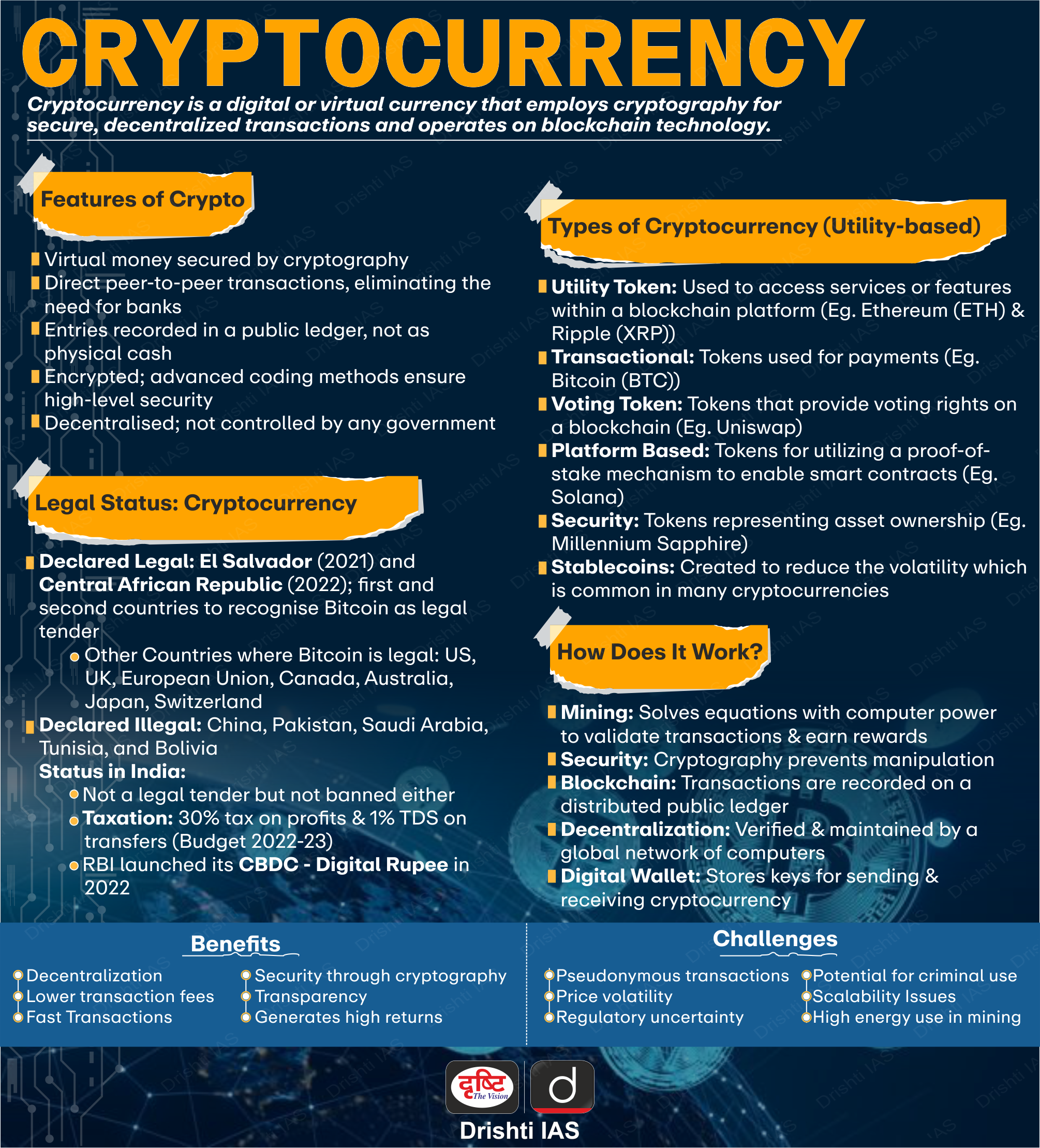
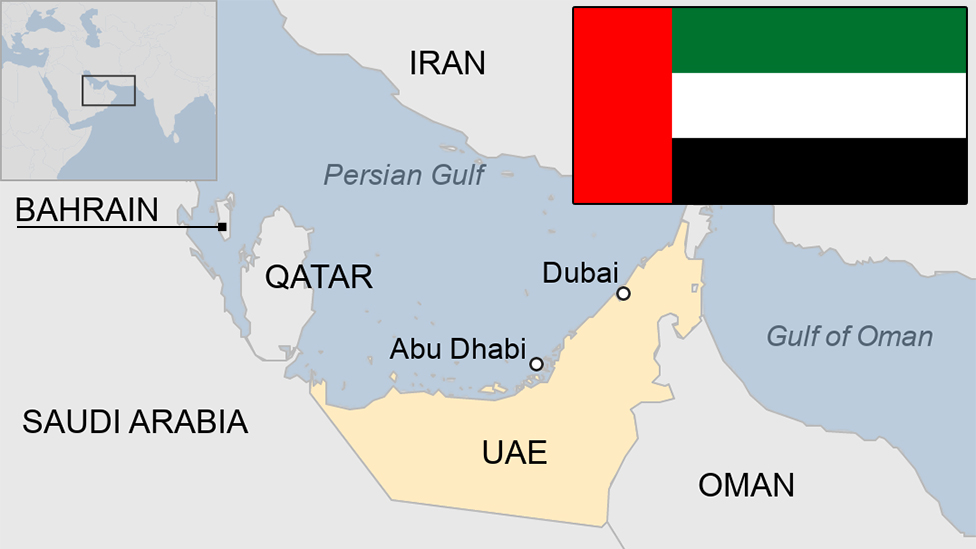
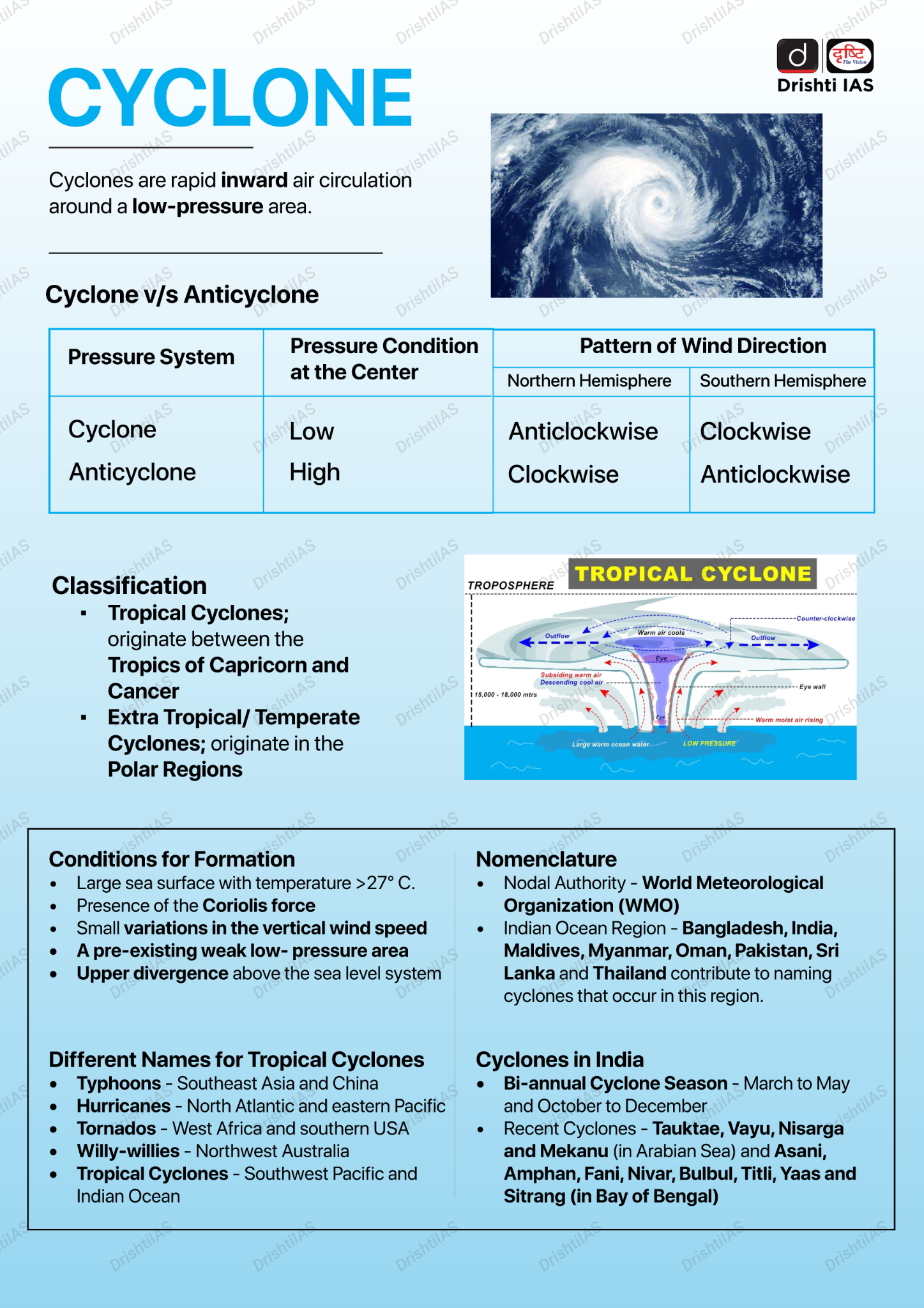
.png)

